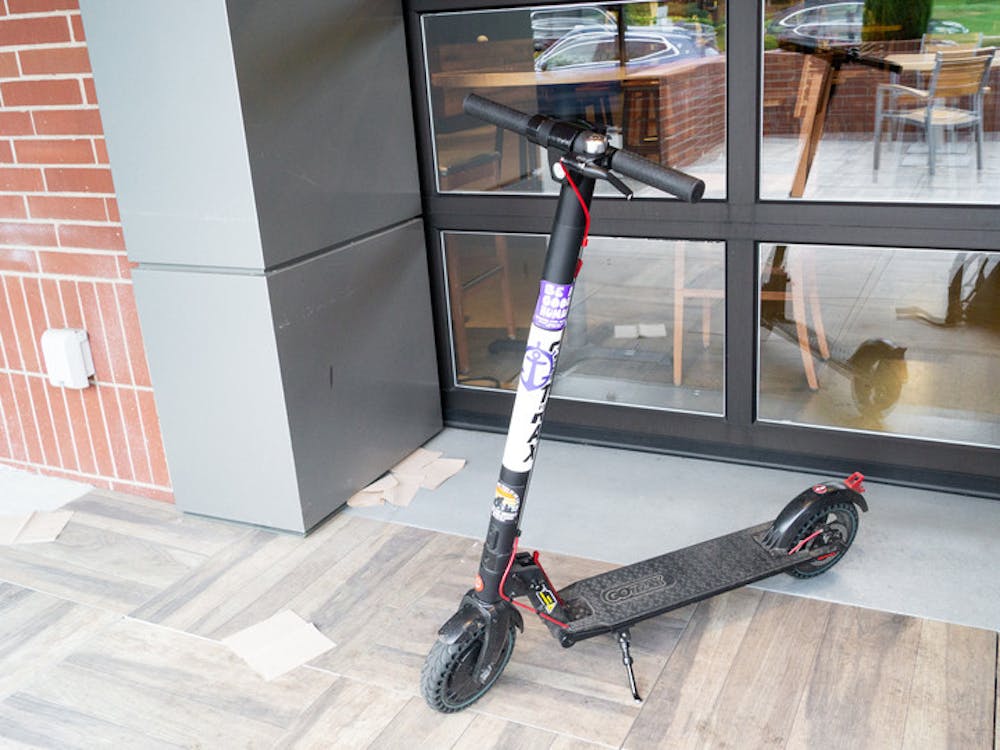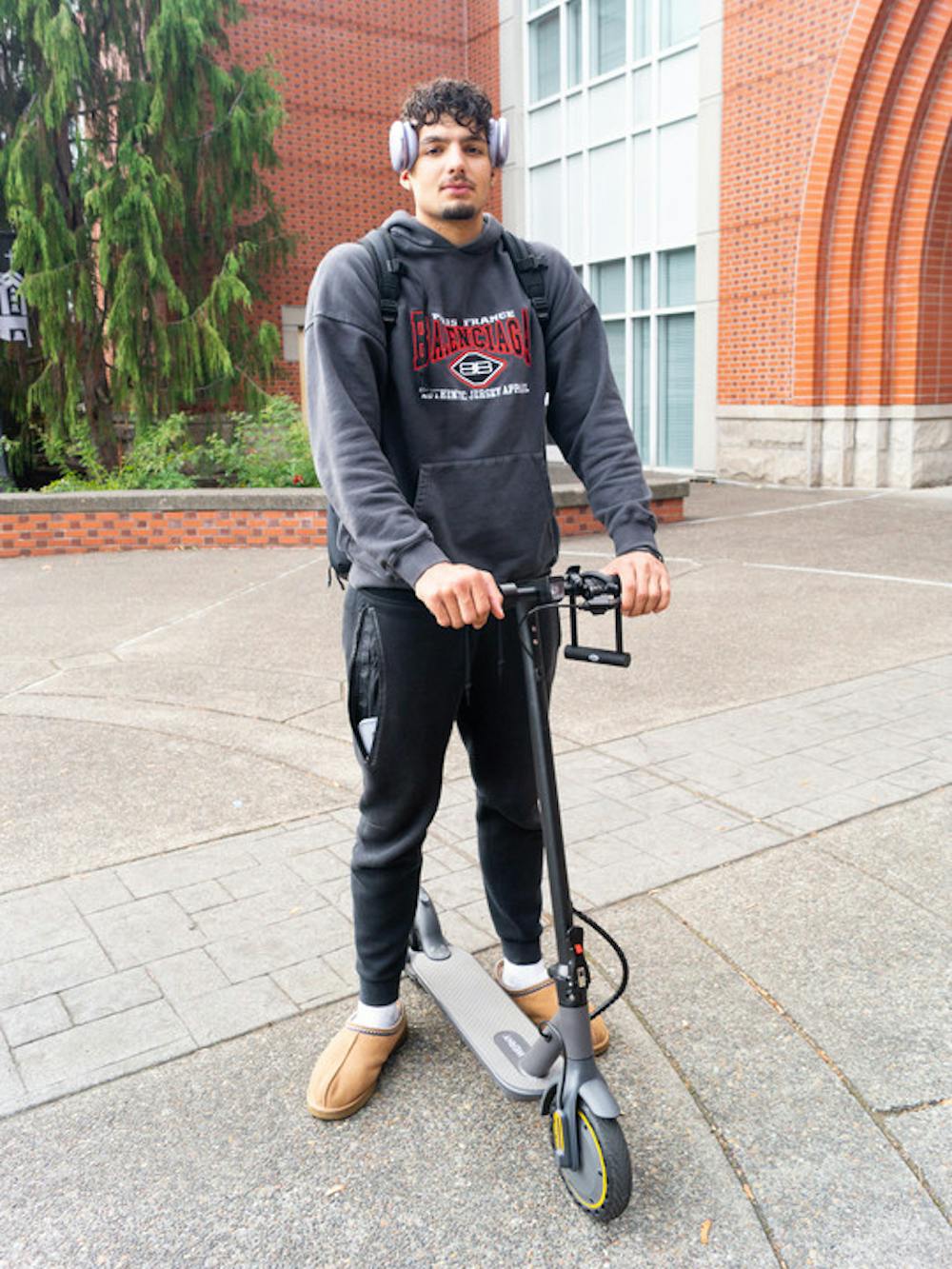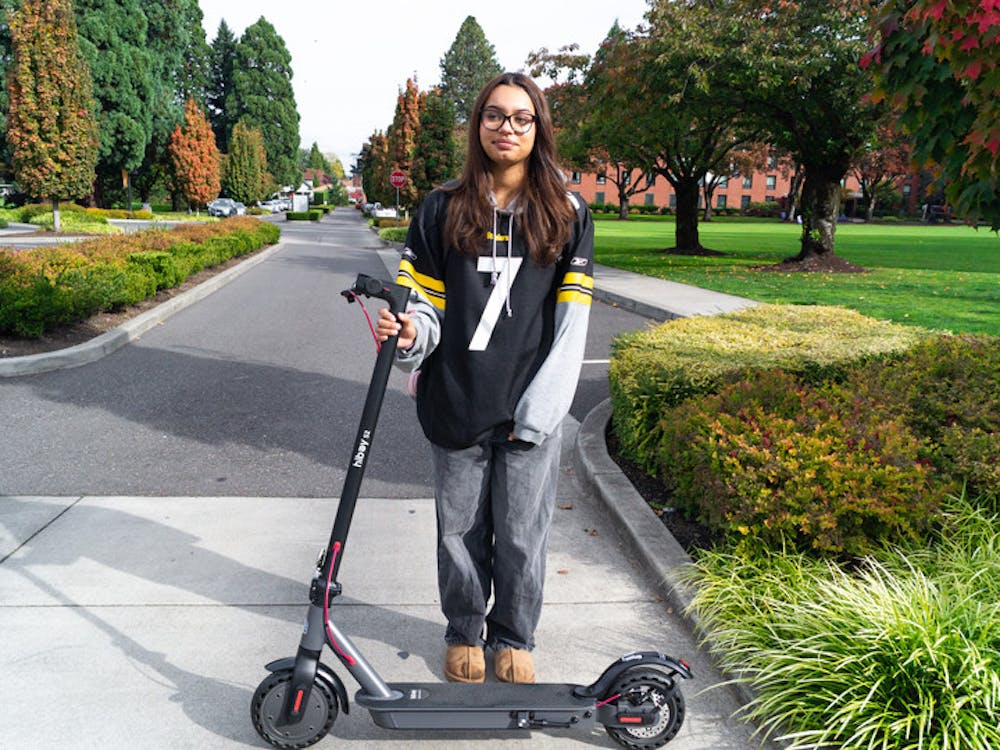On Sept. 29, Campus Safety began enforcing a policy banning motorized scooters and skateboards on campus walkways, according to an email from Michael McNerney, director of Campus Safety.
The policy enforcement has sparked debate among students, some of whom celebrate the removal of scooters from campus sidewalks.
But for student-athletes, who appear to make up a number of electric scooter riders on campus and rely on scooters to get to class, practice and even grocery stores, the scooter ban means adjusting to a new frontier: the road.
Iva Zelic, an assistant coach to the women’s tennis team, explains that many student-athletes use scooters as their primary method of transportation.
“A lot of athletes live around campus,” Zelic said. “And there are a lot of internationals, so not everybody has a car. It’s easier to have a scooter and then just go places.”
Student-athletes make up around 9.67% of full-time undergraduates at UP, according to UP’s 2024 Equity in Athletics Disclosure Act (EADA) report. These students have to balance the pressures of being a full-time student and athlete.

Iva Zelic's scooter sits outside the Pilot House.
Georgia Haynes is a first-year civil engineering major and plays on the women’s indoor volleyball team. She uses a scooter for all the standard reasons: going to class, grabbing groceries and getting to the library quickly. But it also allows her to connect with other student-athletes outside of class.
“It’s hard managing athlete-student life, trying to differentiate being a person versus being an athlete all time,” Haynes said. “So instead of taking nighttime walks, sometimes the student-athletes will go and ride together. We do that pretty often.”
Timo George, a first-year human biology major and forward on the men’s basketball team, says he uses an electric scooter for going to late night classes.
“I use it for my late night class,” George said. “And I usually go to the store, so the grocery store, food trucks, Chill N Fill.”
With Campus Safety’s prohibitions on motorized riding devices, George says his coaches have encouraged him to put the scooter away.
“Our coaches tell us, ‘Don’t use it that much anymore,’” George said. “They want us to be safe. There’s a chance you hit somebody, and you don’t want any slips or falls. I definitely use my scooter less now.”

Men's basketball player Timo George poses for a photo with his scooter outside Franz Hall.
While Campus Safety was not able to provide data on the enforcement of the scooter ban, McNerney said in an email to The Beacon that “anecdotally” the number of incidents between pedestrians and scooters had gone down.
The scooter ban inevitably affects students’ commutes across campus by forcing electric scooter riders off the sidewalks and onto the streets. At a university where 40% of students live off-campus, riders will be joining cars, bikes and motorcycles on the roads.
Haynes says that navigating the roads with a scooter is not especially difficult, but it's the parking lot that poses problems.
“It’s a thin road, and people don’t park the best,” Haynes said. “But you just have to know where you’re going and be mindful.”
Zelic also takes no issue with the walkway ban.
“The sidewalk is for pedestrians to walk on, so I think it’s completely fair,” Zelic said. “Even if I want to go through the middle of campus, I just get off the scooter for a minute, and then I keep scootering on the main road.”
Brady McCracken is a reporter for The Beacon. He can be reached at mccracke27@up.edu








